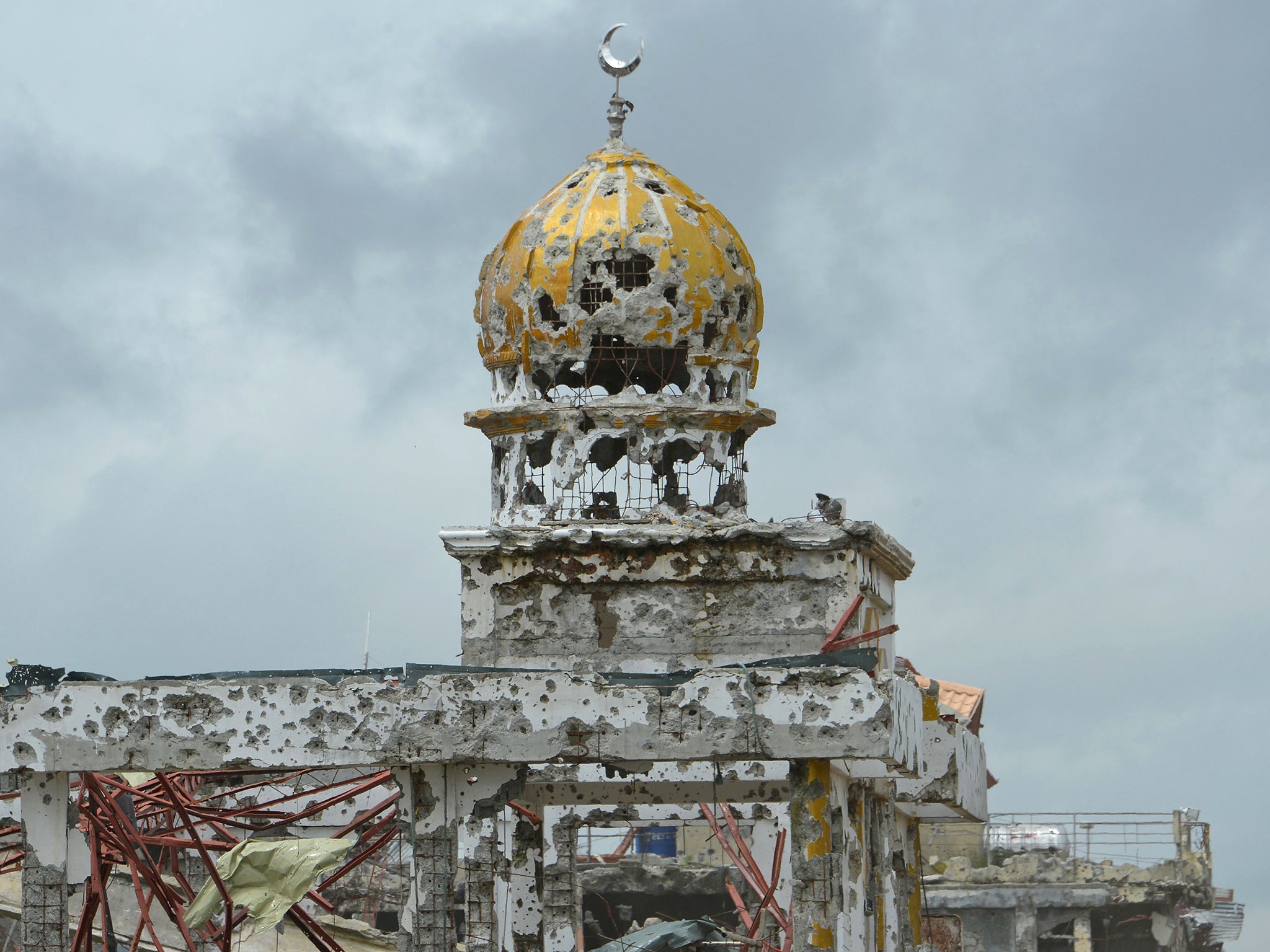Pictures reveal devastation to Philippine city of Marawi after Isis siege
Reconstruction effort expected to cost more than a billion US dollars

The rebuilding effort has begun in the Philippine city of Marawi, after the government declared an end to months of fighting in the region on Monday.
The siege began in May, when the Philippine security forces tried to arrest Isnilon Hapilon, a militant on the FBI's most wanted list for his leadership of Abu Sayyaf, Isis' regional Philippines group.
Instead of giving up his weapons he formed an alliance with another local militant group and took over part of the city.
More than 1,000 people have been killed since the conflict began, including more than 800 militants. 600,000 people have been displaced.
Now, new pictures have emerged showing a city in ruins - buildings riddled with bullet holes, rubble and debris lining the streets, and the shells of burnt out mosques.
Defence chief Delfin Lorenzana announced on Monday that the army had "defeated terrorism in the Philippines" during a meeting of the Association of Southeast Asian Nations (ASEAN).
"After 154 days of the siege of Marawi by the Daesh-inspired Maute ISIS group, or after a week since the Commander-in-Chief declared the liberation of Marawi, we now announce the termination of all combat operations in Marawi," the general said.
The government estimates that the rebuilding effort will cost more than a billion US dollars (£755 million).
The mayor of Marawi, Majul Gandamra, told Philippine newspaper The Inquirer: "Emotionally, it's very hard for us to see the ruins and destruction left by the atrocities committed by the militant group”.
Architect Felino Palafox Jr, who is supporting the reconstruction of the city, The Manila Times of the psychological toll of the destruction: “Marawi was a progressive and thriving city with mid-rise buildings, schools, hospitals, business and grand mosques and masjids.
"Almost everything [in the Mapandi and Bangolo areas], was burned down and destroyed. We were holding back tears as we were told of the significant events.”
Join our commenting forum
Join thought-provoking conversations, follow other Independent readers and see their replies
Comments